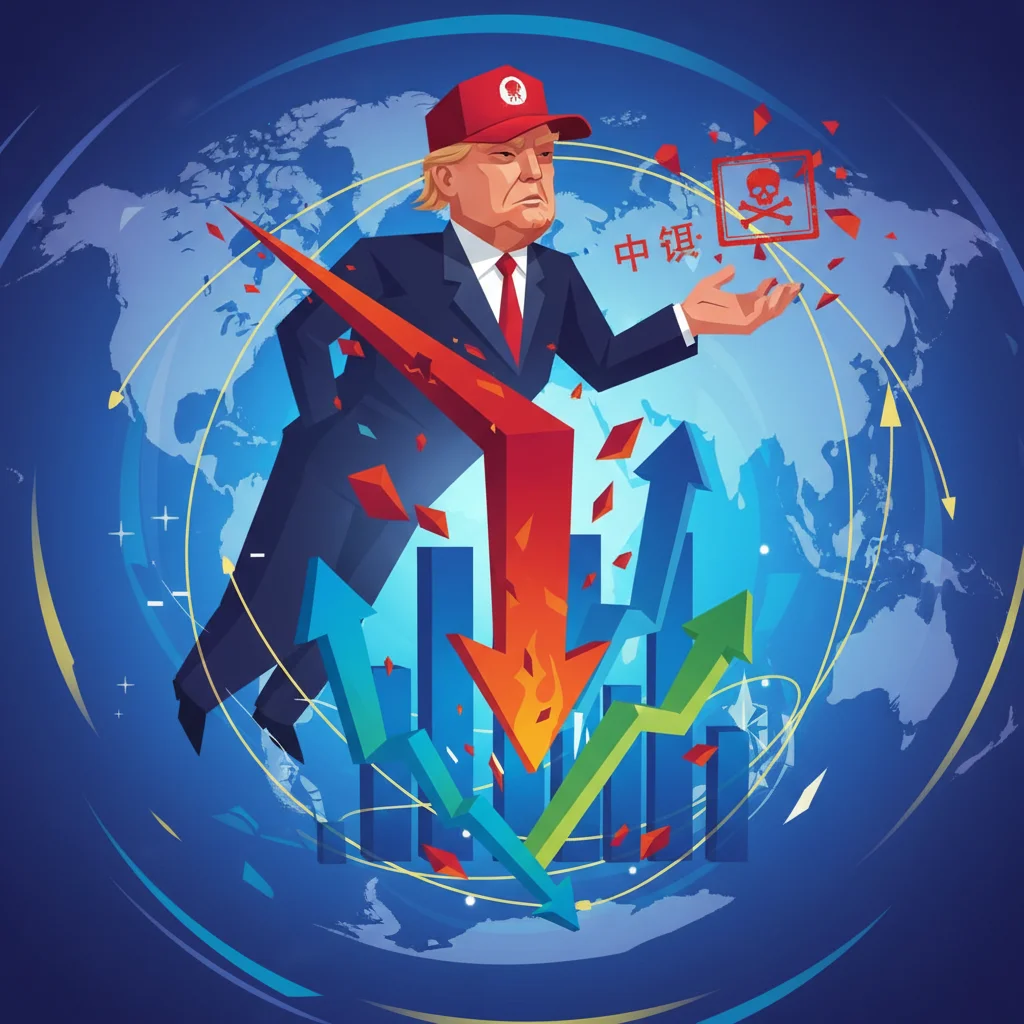
Market Whiplash: Decoding the Global Sell-Off After Trump’s China Tariff Threat
Just as investors were beginning to toast a series of record-breaking highs across global equity markets, a familiar ghost from the past rattled its chains. In a stark reminder of how quickly sentiment can pivot, a single geopolitical development—a renewed tariff threat against China by former U.S. President Donald Trump—sent shockwaves through the financial world. The rally, which had been fueled by weeks of optimism, came to an abrupt and punishing halt, wiping billions off global valuations. This reversal wasn’t just a minor dip; it was a violent market whiplash that left many asking: why are markets still so sensitive to this narrative, and what does it mean for the future of investing and the global economy?
This post will dissect the anatomy of this sudden market downturn. We’ll explore the psychological and technological forces that amplify such sell-offs, analyze the real-world economic implications of trade disputes, and provide a strategic playbook for investors and business leaders navigating this volatile landscape. This isn’t just about a headline; it’s about understanding the intricate dance between politics, economics, and modern financial technology.
The Calm Before the Storm: A Market at its Peak
To fully appreciate the magnitude of the reversal, it’s crucial to understand the environment that preceded it. In the weeks leading up to the sell-off, major indices like the S&P 500 and the Nasdaq Composite in the U.S., along with their global counterparts, were consistently charting new territory. This bullish sentiment was underpinned by several key factors: robust corporate earnings reports, signals from central banks suggesting a more accommodative monetary policy, and a general belief that the worst of the post-pandemic economic headwinds were behind us.
This period of tranquility and growth lulled many into a state of confidence. The CBOE Volatility Index (VIX), often referred to as the market’s “fear gauge,” was trading at relatively low levels, indicating a lack of investor anxiety. However, as seasoned market participants know, periods of low volatility can often be precursors to sudden, sharp shocks. The foundation of the rally was strong, but it was not unshakable, resting on the fragile assumption of a stable geopolitical landscape—an assumption that was about to be shattered.
Anatomy of a Sell-Off: More Than Just a Headline
The announcement of potential new tariffs on Chinese goods acted as a powerful catalyst, triggering a cascade of selling across global markets. But the reaction was far from simple. It was a complex interplay of human psychology, automated trading systems, and fundamental economic fears. Let’s break down the core drivers of the downturn.
1. The Psychology of Fear and Uncertainty
At its core, investing is a forward-looking activity. Markets are constantly trying to price in future growth, profits, and risks. A sudden threat of a trade war injects a massive dose of uncertainty into the equation. Investors, unable to accurately model the potential impact on corporate earnings and global supply chains, default to a “risk-off” posture. This means selling assets perceived as risky (like stocks) and moving into safe-haven assets like government bonds or gold. The original Financial Times report highlighted this immediate flight to safety, with U.S. Treasury yields falling sharply as investors piled in.
2. The Role of Algorithmic and High-Frequency Trading
In today’s highly sophisticated stock market, a significant portion of trading is executed not by humans, but by complex algorithms. This is a cornerstone of modern fintech. These systems are programmed to react to keywords in news headlines, social media posts, and data releases in microseconds. When words like “tariff,” “trade war,” and “China” hit the wires, automated sell programs are triggered instantly, long before a human trader has even finished reading the sentence. This high-frequency trading (HFT) can dramatically amplify the initial price move, turning a ripple of concern into a tidal wave of selling. While this technology provides liquidity, it also contributes to the kind of flash-crashes and heightened volatility we witnessed.
3. Fundamental Economic Concerns
Beyond the immediate sentiment-driven panic, the threat of tariffs has tangible consequences for the real economy. Tariffs are essentially a tax on imported goods. This has a multi-stage impact:
- Supply Chain Disruption: Companies that rely on Chinese components for their products (think Apple, auto manufacturers, and retailers) face a sudden increase in costs.
- Reduced Corporate Profits: Businesses must either absorb these higher costs, which hurts their profit margins, or pass them on to consumers. Both outcomes are negative for their stock valuation.
- Consumer Impact: Higher prices on consumer goods can lead to reduced purchasing power and a slowdown in consumer spending, which is a major driver of economic growth.
- Retaliation Risk: The threat of tariffs


